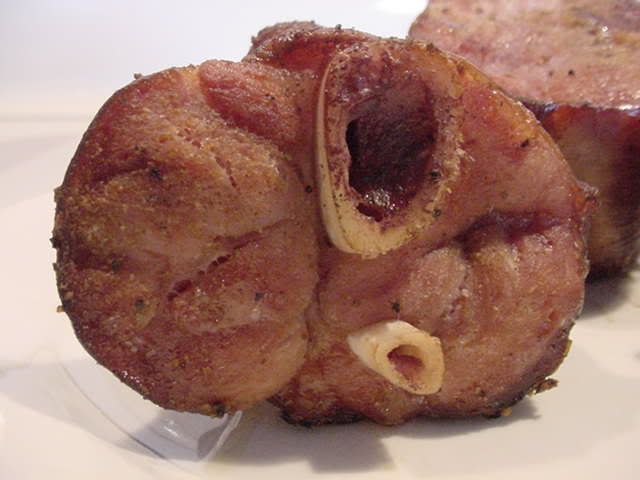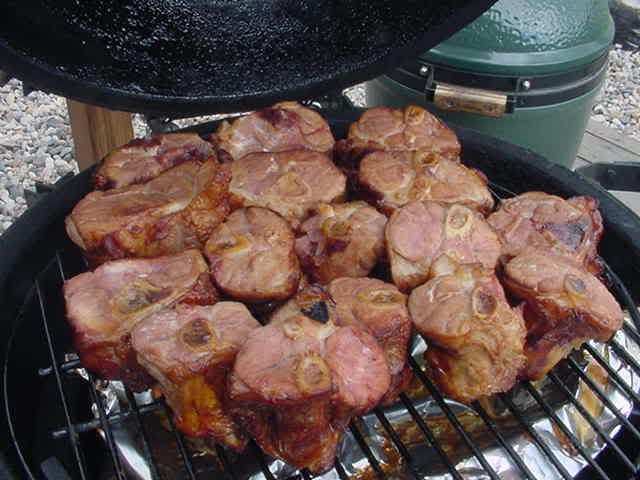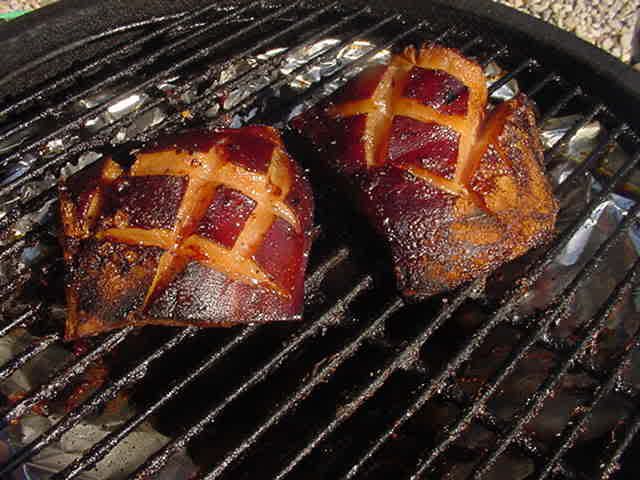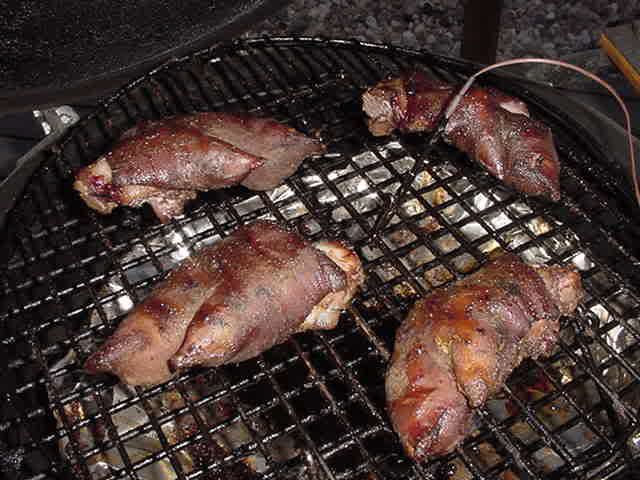PORK - Hocks, Shanks, Jowls & Trotters

Some of the overlooked cuts can sometimes be the most flavorful. Hocks, shanks, hog jowl and trotters (pig feet) are inexpensive, quite tasty on their own, and add a great deal of flavor to other dishes like a pot of beans or soups & stews. Most jowls have already been smoked. Hocks, trotters and shanks are available either fresh or smoked. If you buy smoked items, doing a second smoke on them really wakes up the flavor.
Brining is not required before smoking fresh hocks, shanks or trotters, but it does change the texture, adds some color and flavor. If you want to experiment with brining, here is a starter recipe:
1 gallon of water
1 cup kosher salt
1 cup sugar
2 tablespoons of pink salt (Insta-cure #1, Prague powder #1)
1 tablespoon of black pepper
TIP #1: Tenderquick can be substituted for the pink salt. Use 1 cup of Tenderquick and omit the kosher salt.
TIP #2: For a milder "cure" the salt can be reduced to 2/3 cup and 2 tablespoons of Tenderquick is added instead of the pink salt.
Optional ingredients include: bay leaves, crushed garlic, garlic powder or onion powder (use powders, not salt)
Combine all of the ingredients in a pot and heat to a simmer, until the salts and sugar is dissolved. Chill the brine, transfer to a non-reactive container like a plastic zipper bag, plastic bucket etc. Submerge the items (use a plate or saucer if needed to keep them submerged) and refrigerate for 3 days. Remove the items, rinse well, soak in clean water for 2 to 3 hours, dry and refrigerate for 24 hours. Then follow the cooking method below.
COOKING METHOD (Hot Smoking):
Set up the cooker for barbecuing 215° to 250° (grate temp), indirect. Sprinkle a light coating of rub on all sides and smoke with your favorite wood. A couple of hours works for previously smoked ones, 3 to 5 hours is needed for fresh ones. Basting is optional during the cook. For doneness, an internal temperature of 150° to 160° is adequate. They freeze well. In soups or beans, simmer the pieces for a couple of hours to flavor the dish. Remove the pieces, shred the meat and return to the pot. Discard the bones, skin and fat.
Here is a load of hocks. Hocks are generally "ham hocks", cut from the lower end of a ham (rear leg). They can also be cut from the lower end of the picnic (front leg)
These are smoked shanks, which generally are cut from the lower area of a picnic (front leg) and also called "foreshanks" When used in a pot of beans or braised, the smoked shanks will produce meat that will be fork tender, or pullable, moist and full of flavor. If they happen to be cut from the rear leg, they are referred to as hind shanks.
Smoked hog jowl will add flavor to black eyed peas, bean dishes of all kind and collard greens. Score the skin before smoking. Basting is not needed due to the heavy layer of fat. If you prefer, jowl can be trimmed of some of the fat before using for cooking.
Cook trotters just like shanks or hocks. (Sometimes they will come "split") They are not as meaty or as convenient to clean as hocks or shanks, but are very flavorful. They can be used whole in beans or stews and then discarded.

No comments:
Post a Comment